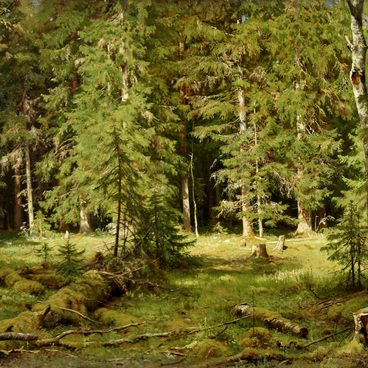Konstantin Flavitsky remained in the history of Russian art as the ‘Artist of one painting “. This is partly due to the short life of the artist, but on the other hand, his unusually serious and demanding attitude to his own painting. Sketches, drafts and versions of the artist”s most glorified painting “Princess Tarakanova” is an evidence of it.
For this painting, the artist was awarded the title of professor of historical painting; the picture was the first work on a historical theme in Pavel Tretyakov’s collection.
For the plot of his large canvas, Flavitsky chooses one of the legends associated with the name of the imaginary Princess Tarakanova. In 1774, she appeared in Rome, declaring herself the daughter of Empress Elizabeth Petrovna and her favorite A.G. Razumovsky and declaring her rights to the Russian throne. The reigning empress Catherine II sent Count Alexei Orlov to Italy, who by cunning brought the foreign adventurer to Petersburg. She was imprisoned in the Peter and Paul Fortress, where she died of consumption in 1775.
Flavitsky could get to know this version in an article by M. Loginov from the ‘Russian Conversation’ magazine in 1859. In fact, the impostor was called Princess of Vladimir, but the rumor appropriated her the title of Princess Tarakanova and attributed the death not from illness, but during the infamous flood of 1777, when water flooded the prison cells of the Peter and Paul Fortress, killing the lives of many prisoners. Flavitsky consciously takes as the basis of his plot precisely this legend, which made it possible to strengthen the dramatic effect of what is happening.
‘Princess Tarakanova’ (1862) from the collection of the Yekaterinburg Museum is presumably the original version of the famous canvas. The differences lie not only in the size of the canvas, but also in the most figurative interpretation - in the face and figure of the young woman there is still no that spectacular tragedy and last despair, which even now make the audience freeze in front of the canvas in the hall of the Tretyakov Gallery.
The woman is very young, her face, even distorted by a grimace of horror, remains beautiful. The silk of the dress recalls the time of former luxury and contrasts with a dirty, greasy bed. In the foreground, the artist depicted rats, also trying to escape, but it is obvious that they will soon share the fate of the girl. There are bread and water on the table. The heavy atmosphere of an enclosed space from which the prisoner cannot escape. Creating a tragic image of the victim of political repression of Catherine II, Flavitsky hinted at the current situation and the arrests of young democrats in the early 1860s.



